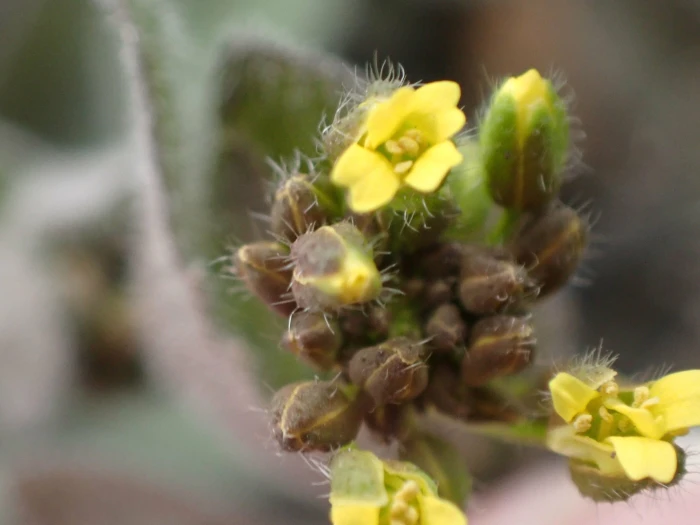Woodland Whitlow-Grass
(Draba nemorosa)
Woodland Whitlow-Grass (Draba nemorosa)
/
/

© Mary Krieger
CC BY 4.0
Image By:
© Mary Krieger
Recorded By:
Copyright:
CC BY 4.0
Copyright Notice:
Photo by: © Mary Krieger | License Type: CC BY 4.0 | License URL: http://creativecommons.org/licenses/by/4.0/ | Uploader: marykrieger | Publisher: iNaturalist |






















Estimated Native Range
Climate Requirements for Simpsonville, South Carolina
| This Plant | Your Site | Plant Suitability for Your Location | ||
|---|---|---|---|---|
| • Precipitation | 1" - 107" | 51" | Aquatic | Aquatic |
| • High Temp. | 47°F - 104°F | 90°F | Your summer temperatures are normal for this plant. | Excellent |
| • Low Temp. | -55°F - 48°F | 30°F | Your winter temperatures are normal for this plant | Excellent |
This plant may not grow well at your location - your precipitation is too high.
Summary
Draba nemorosa, commonly known as Woodland Whitlow-grass, is a perennial herb native to a variety of habitats including rocky slopes, alpine meadows, and open woodlands across the subarctic and temperate Northern Hemisphere. It is particularly adapted to cold, well-drained conditions found in these regions. This plant typically forms low-growing mats reaching 5-15 cm in height and is characterized by its small rosettes of basal leaves and slender flowering stems.
Woodland Whitlow-grass blooms in the spring, producing clusters of tiny, four-petaled white flowers that are quite showy despite their size. The plant’s ability to thrive in poor, rocky soils and its low maintenance requirements make it a suitable choice for rock gardens, alpine collections, and as ground cover in suitable climates. It prefers full sun to partial shade and requires well-drained soil. While it is not commonly found in cultivation, it can be an attractive addition to gardens designed with native and low-maintenance plants in mind.CC BY-SA 4.0
Woodland Whitlow-grass blooms in the spring, producing clusters of tiny, four-petaled white flowers that are quite showy despite their size. The plant’s ability to thrive in poor, rocky soils and its low maintenance requirements make it a suitable choice for rock gardens, alpine collections, and as ground cover in suitable climates. It prefers full sun to partial shade and requires well-drained soil. While it is not commonly found in cultivation, it can be an attractive addition to gardens designed with native and low-maintenance plants in mind.CC BY-SA 4.0
Plant Description
- Plant Type: Herb
- Height: 0.1-0.5 feet
- Width: 0.5-1 feet
- Growth Rate: Moderate
- Flower Color: Yellow
- Flowering Season: Spring, Summer
- Leaf Retention:
Growth Requirements
- Sun: Full Sun, Part Shade
- Water: Medium
- Drainage: Medium, Fast
Common Uses
Low Maintenance, Rock Garden
Natural Habitat
Rocky slopes, alpine meadows, and open woodlands across the subarctic and temperate Northern Hemisphere
Other Names
Common Names: Yellow Whitlow Grass
Scientific Names: Draba nemorosa, Crucifera nemorosa, Draba dictyota, Draba gracilis, Draba intermedia, Draba intermedia, Draba lutea, Draba lutea, Draba lutea var. brevipes
GBIF Accepted Name: Draba nemorosa